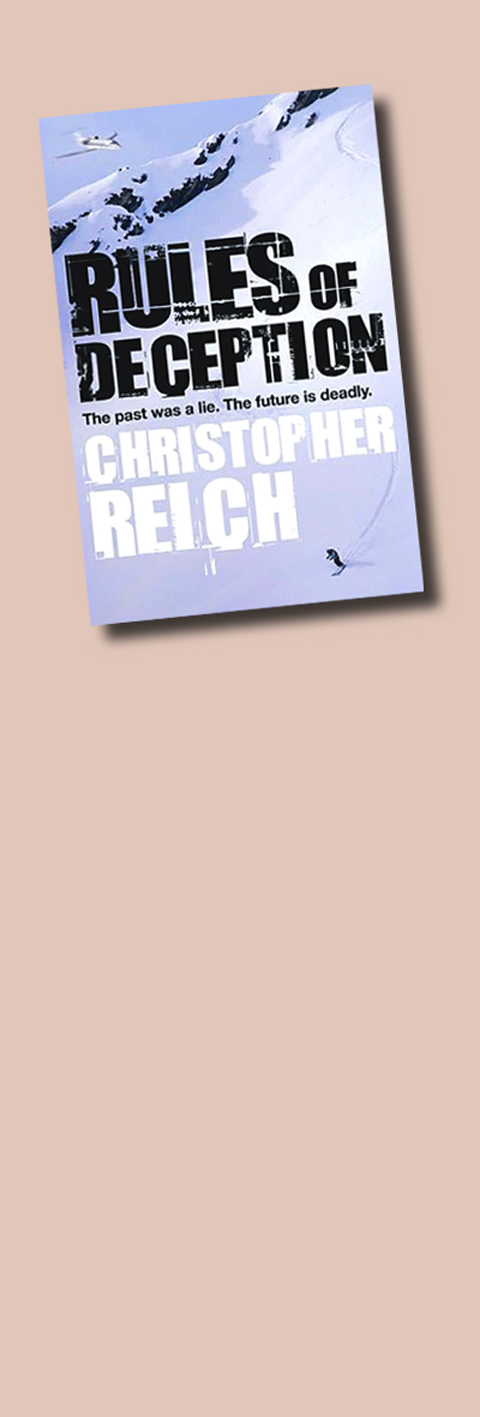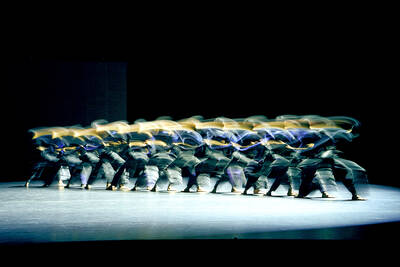There are rules for writing books like Christopher Reich's Rules of Deception. And Reich helpfully spells them out. In a brief promotional video clip, an increasingly common feature on Amazon.com book listings, Reich says:
"There's a few things you have to have to make a great page-turner: a likable hero who has to face insurmountable odds and overcome them; betrayal, the question of who can you trust; exotic locales, international settings to really keep you on the edge of your seat." So look to Rules of Deception for all of the above.
Here is something Reich doesn't say: The formula for such books is so familiar that it's hard to spot the good ones, at least at first glance. Rules of Deception is the rare version that begins in by-the-numbers fashion, promising not much, but furiously picks up steam as it goes.

So there's the obligatory prologue with a portent of danger. A butterfly flits around a high-security compound in an unknown location, oblivious to barbed wire. Then the butterfly is revealed to be a mechanical device carrying a rice-grain-size microwave transmitter. "They have found us," a guard ominously warns.
Next meet the hero. "Jonathan Ransom knocked the ice from his goggles and stared up at the sky," Reich writes, by way of introduction. Jonathan has "wine-black eyes," works for Doctors Without Borders and loves mountain climbing. He's high up an alp with his beautiful wife, Emma, when an avalanche sweeps her away. The likable Jonathan has to face insurmountable odds to determine what happened to her.
Cut to Bern-Belp airport, elsewhere in Switzerland. (Note the exotic locales and international settings.) There "one man stood slightly apart from the others." He is Marcus von Daniken, head of Switzerland's counterterrorism organization, the Service for Analysis and Prevention. The SAP is akin to the FBI and MI5, and a book like this really savors such alphabet soup. In addition to his heavy use of tough-sounding acronyms, Reich (an avowed fan of the Ludlum, Forsythe and le Carre style of espionage thriller) sounds knowledgeable about technology and uses words like flechettes, haboob and batrachotoxin with authoritative ease.
Von Daniken accuses a CIA man named Palumbo of transporting a prisoner in violation of the Geneva Convention. Palumbo denies any wrongdoing. Unbeknownst to von Daniken, however, Palumbo happens to have with him a terrorist's bloody thumbnail. In the hard-boiled context of Rules of Deception, this does not necessarily make Palumbo an unsympathetic character.
Jonathan goes back to his hotel. He accepts delivery of an envelope addressed to Emma. It contains Swiss Railway baggage-claim tickets. Those lead him to her secret luggage, which is full of strong suggestions that Emma led a double life.
Along comes Simone Noiret, a woman apparently named by a French film aficionado. Simone was Emma's friend, and she joins Jonathan in the increasingly frantic search. They are attacked by strangers. And Jonathan is forced, despite his Hippocratic oath to do no harm, to kill one of the strangers by driving a car antenna through his ears. By this point, Rules of Deception has come very close to wearing out its welcome. But then the unexpected happens. Reich turns out to have a turbo-charged plot in the offing, and he begins explicating it with more originality and verve than might initially have been expected.
For one thing, Jonathan gets actually appealing, once he has begun engaging in breathless chases and donning disguises. For another, the book's international intrigue proves to be grounded in fact, and it begins zeroing in on a jaw-dropping nuclear weapons scheme.
And instead of grasping desperately for ways to expand on its premise, in the disappointing manner of many other such books, Rules of Deception develops an entertainingly serpentine complexity. A number of people in this story prove to be working undercover, with the use of fake identities, in an arms-smuggling conspiracy that leads to the Middle East.
Even this fact would be standard operating procedure if the real purposes of their work were discernible. But Reich keeps his secrets for a long time. Meanwhile, items like hidden computer data, plastic explosives, poison-tipped bullets, industrial centrifuges (which might be used in the manufacture of enriched uranium or yogurt) and bunker-buster bombs begin to animate the story.
And even the Rapture gets a new spin this time. The Book of Revelation is for today's thriller writers what the Cold War was for earlier ones: a source of doomsday stories and a way to ratchet up a thriller's stakes to terrifying effect. In Rules of Deception, Reich sets some dangerous fanatics in motion but keeps their identities and motives mysterious. And his finale lives up to the level of suspense he has created.
Reich integrates menacing real figures like A.Q. Khan, the Pakistani metallurgist with a command of nuclear technology, and a couple of presidents into Jonathan's adventures. He also uses one of the genre's oldest tricks to surprisingly potent effect. And then there's the cool-customer dialogue. ("Who do you work for?" "Suffice it to say we're a powerful group.") Put it all together, and you get exactly the kind of page-turner that Reich promised.

Most heroes are remembered for the battles they fought. Taiwan’s Black Bat Squadron is remembered for flying into Chinese airspace 838 times between 1953 and 1967, and for the 148 men whose sacrifice bought the intelligence that kept Taiwan secure. Two-thirds of the squadron died carrying out missions most people wouldn’t learn about for another 40 years. The squadron lost 15 aircraft and 148 crew members over those 14 years, making it the deadliest unit in Taiwan’s military history by casualty rate. They flew at night, often at low altitudes, straight into some of the most heavily defended airspace in Asia.

Beijing’s ironic, abusive tantrums aimed at Japan since Japanese Prime Minister Sanae Takaichi publicly stated that a Taiwan contingency would be an existential crisis for Japan, have revealed for all the world to see that the People’s Republic of China (PRC) lusts after Okinawa. We all owe Takaichi a debt of thanks for getting the PRC to make that public. The PRC and its netizens, taking their cue from the Chinese Communist Party (CCP), are presenting Okinawa by mirroring the claims about Taiwan. Official PRC propaganda organs began to wax lyrical about Okinawa’s “unsettled status” beginning last month. A Global

Taiwan’s democracy is at risk. Be very alarmed. This is not a drill. The current constitutional crisis progressed slowly, then suddenly. Political tensions, partisan hostility and emotions are all running high right when cool heads and calm negotiation are most needed. Oxford defines brinkmanship as: “The art or practice of pursuing a dangerous policy to the limits of safety before stopping, especially in politics.” It says the term comes from a quote from a 1956 Cold War interview with then-American Secretary of State John Foster Dulles, when he said: ‘The ability to get to the verge without getting into the war is

Like much in the world today, theater has experienced major disruptions over the six years since COVID-19. The pandemic, the war in Ukraine and social media have created a new normal of geopolitical and information uncertainty, and the performing arts are not immune to these effects. “Ten years ago people wanted to come to the theater to engage with important issues, but now the Internet allows them to engage with those issues powerfully and immediately,” said Faith Tan, programming director of the Esplanade in Singapore, speaking last week in Japan. “One reaction to unpredictability has been a renewed emphasis on